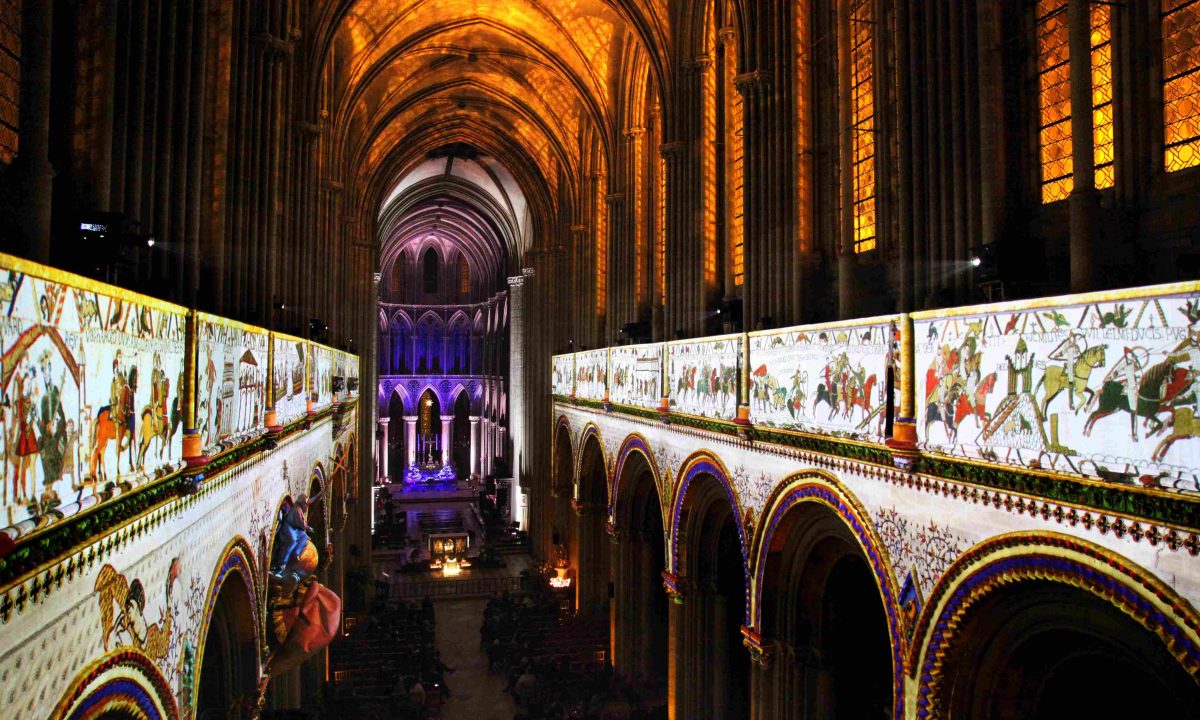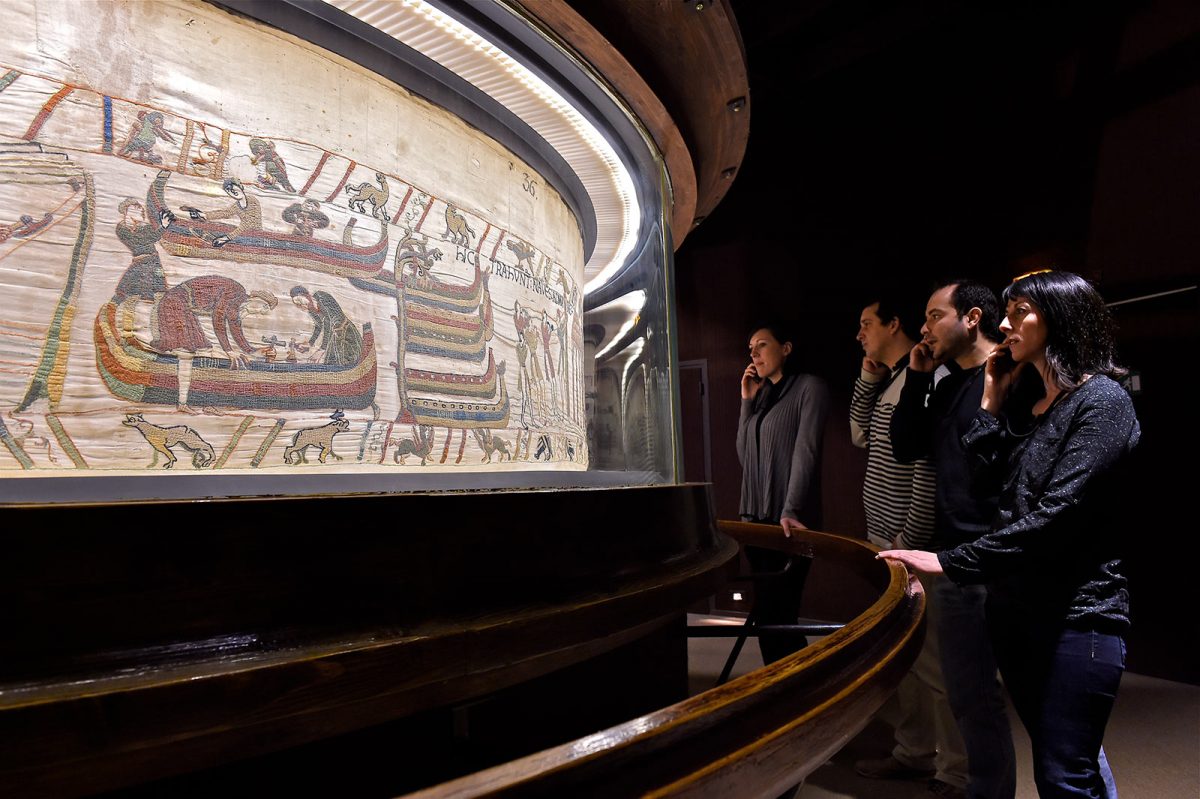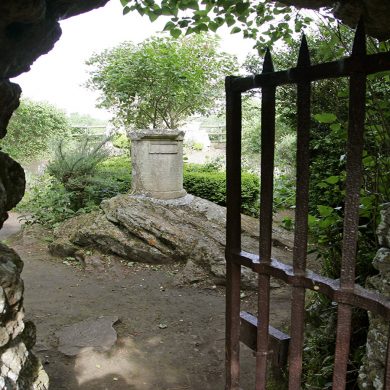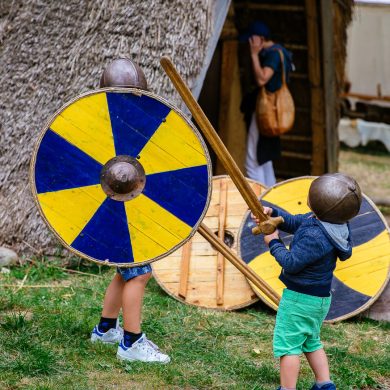Updated on 31 May 2021
Reading time: 3 minutes
Seventy-one metres long, the famous Bayeux Tapestry is not a tapestry in fact, but rather a woollen embroidery on a linen backing. It tells the epic story of William the Conqueror, who became King of England in 1066 after the Battle of Hastings.
The Bayeux Tapestry was probably commissioned in the 11th century by Bishop Odo, William the Conqueror’s half-brother, to embellish his newly-built cathedral in Bayeux. It was almost certainly created in south-east England upon instruction by Bishop Odo, as he was also made Earl of Kent following the Norman Conquest. The embroidery was displayed in Bayeux Cathedral on 14 July 1077, and has remained in Bayeux ever since.
The primary purpose of the Bayeux Tapestry was to justify the Norman Conquest of England before God. In 58 scenes, it tells the story of the events surrounding this key event in Anglo-French history. The story starts in 1064, when Edward the Confessor, King of England, instructs his brother-in-law Harold Godwinson to travel to Normandy to offer his cousin William the succession to the English throne. Although the end of the embroidery is missing, the story ends with the Anglo-Saxons fleeing at the end of the Battle of Hastings in October 1066.

See it for yourself
The Bayeux Tapestry is displayed in a dark room where only the embroidery itself is lit. This is to protect this old and incredibly delicate artefact. Audioguides are available in 16 languages, including versions for children in French and English, and take visitors through the story of the Norman Conquest, step by step, pointing out elements of the embroidery that they might not have otherwise spotted.

temporary closure of the first and second floors
Owing to the current Covid-19 global pandemic, the visit to the Bayeux Tapestry is currently limited to the tapestry alone. It is hoped that at some point the Bayeux Museum will be able to reopen the permanent exhibition on the first floor which explores why the Bayeux Tapestry was made, and allow visitors to view a 16-minute film screened alternately in French and English on the second floor, which includes re-enactments of scenes from the Battle of Hastings.
THE BAYEUX TAPESTRY IS STILL IN BAYEUX!
The Bayeux Museum would like to clarify that the Bayeux Tapestry is still displayed in Bayeux and will remain there for the next few years. Although it has been announced by French President Emmanuel Macron that the Bayeux Tapestry will be loaned to the UK, a decision on the exact date will only be made once the embroidery has been examined to ascertain its state of conservation. If it is possible and safe to move the Bayeux Tapestry, the loan should happen in 2022 or 2023. During this time, the Bayeux Museum will be closed to the public while a new museum is built in Bayeux, due to open in 2025.
Useful information
Bayeux Museum
13 bis rue de Nesmond
14400 Bayeux
bayeuxmuseum.com/en/the-bayeux-tapestry
Opening hours
Every day except Christmas Day and all of January,
9:30am-12:30pm and 2pm-6pm (last entry is 45 minutes before closing)
Prices
Full price: €9.50
Concessions: €7.50
Children under 10: Free



